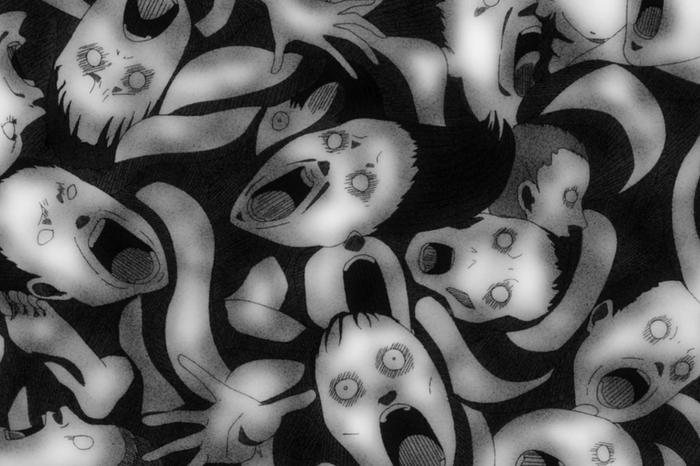
Spoilers follow for all four episodes of Uzumaki, which concluded its season on Adult Swim on October 19 and is available to stream on Max.
In the almost intolerably unsettling Uzumaki, human bodies regularly do what they should nott. Smooth-skinned backs grow and harden into textured nautilus shells. Limbs elongate into jiggling lengths of flesh. Mouths grow extra sets of teeth, eyes blacken into vortexes of shadow, and spinal columns seemingly melt away so that one’s figure can arch, curve, and coil into itself, breaking every law of anatomy you thought you knew. Good luck diagnosing this curse, Doctor Odyssey! Keep those syringes of Substance to yourself, Elisabeth Sparkle! This spooky season, Uzumaki is your body-horror best bet.
Five years in the making, Adult Swim and Production I.G’s four-episode Uzumaki: Spiral Into Horror, an adaptation of Junji Ito’s horror manga, premiered on Adult Swim on September 28, more than 25 years after Uzumaki’s three-volume run concluded. The title is the Japanese word for “swirl” and the story is set in the small village of Kurouzu, which translates to “black vortex,” a pretty accurate description of the nightmare consuming the place and infecting its thousands of residents. As narrator and protagonist Kirie explains, suddenly one day there were spirals everywhere in town: clouds blocking out the sun, hurricanes blowing through the streets, whirlpools forming in ponds and rivers, plants growing in curlicues. Once they were established in the natural world, the symbols spread to Kurouzu’s citizens, transforming them into monstrous manifestations of this cosmic horror. The father of Kirie’s boyfriend, Shuichi, is the first affected: He becomes so self-destructively obsessed with the spiral that he contorts himself into a mimicry of it, crushing all his bones, smooshing his face into a grotesque scream, and leaving his corpse in the family home for Shuichi and his mother to find.
It’s Uzumaki’s first ghastly image and perhaps its most awful — but it sure has a lot of competition. Each episode tracks another phase of the town’s destruction as paranoia sets in, residents turn against one another, and Kirie and Shuichi become increasingly powerless against what he calls “the curse of the spiral.” And while it’s true that the animation quality drops somewhat after the premiere’s staggeringly inky blacks, undulating backgrounds, and 3-D depth (the second episode looks particularly sketchy and sparse), the series makes up for that diminishment with faithfulness to Ito’s source material — terrifying, grotesque, hideous, freakish, absolutely perfect faithfulness. What Uzumaki never loses is the core idea that the human body is a malleable, spongy thing, available to absorb both kindness, compassion, and good energy and malevolence, evil, and brutality. There are forces at work in this world that will do everything they can to crush opposition, independence, and love, and their depravity can be literal, transformative, and unexplained. Lovecraft fans, assemble!
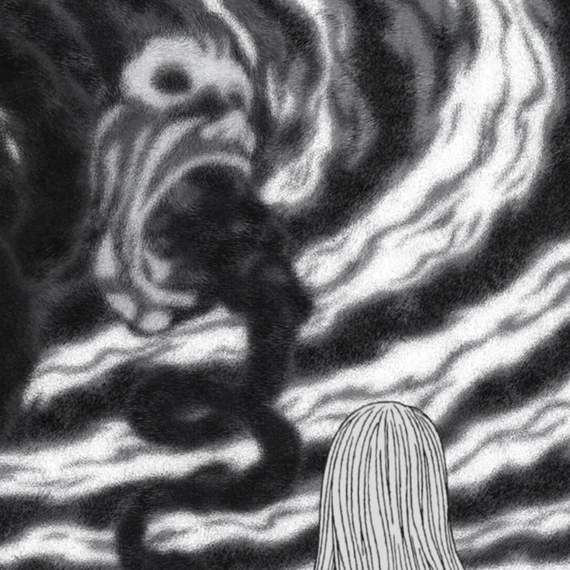
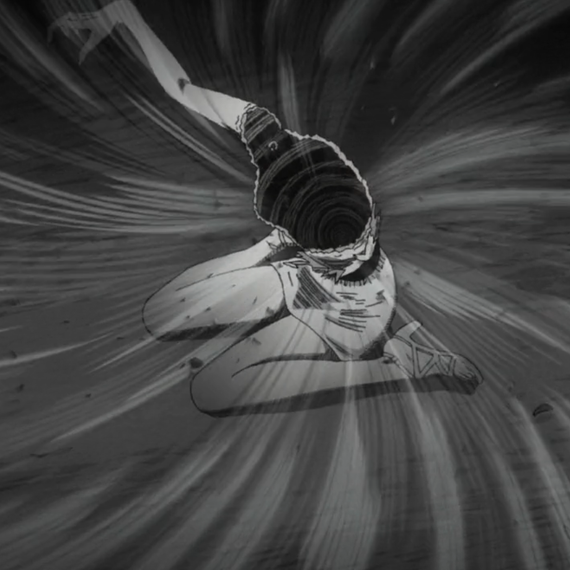
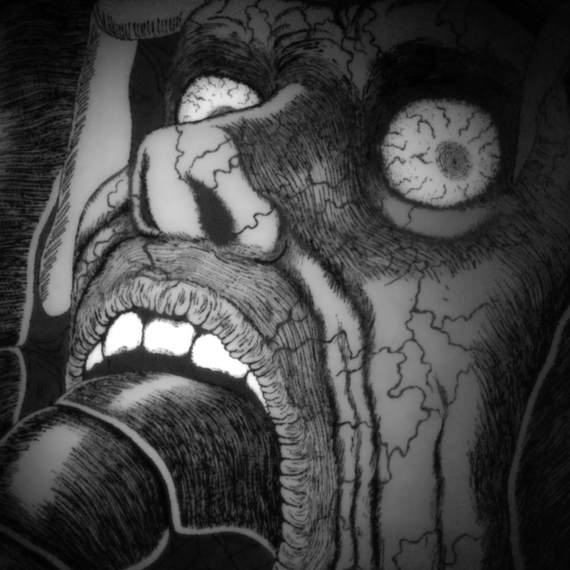
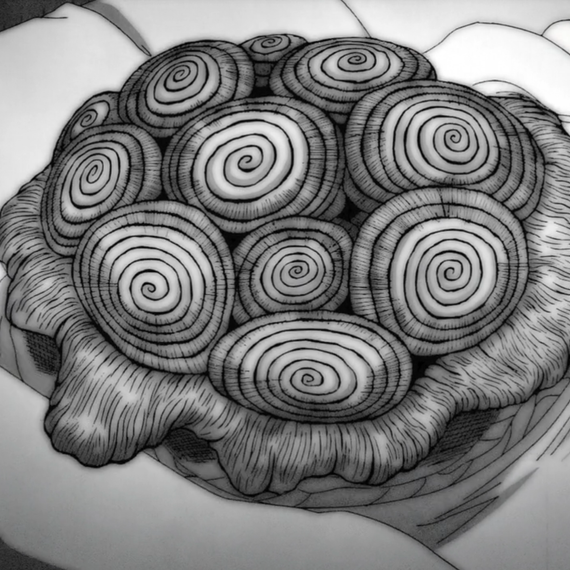
Uzumaki is impressively fast-paced, introducing numerous dreadful new illustrations of its conceit with each episode; each half-hour packs in enough weird shit from Ito’s original manga that even David Lynch would be impressed. Shuichi’s father spreads the curse through the town via his death, and as his body is cremated, we see his soul as a gigantic black smoke spirit in the sky, his mouth a yawning maw attempting to consume all of Kurouzu. A girl with a crush on Shuichi turns herself into a spiral to tempt him; the vortex that has built up inside her body sucks her into herself, limb by limb, until she ceases to exist. Two of Kirie’s classmates whose parents don’t want them to be together see a pair of entwined snakes mating, then will themselves to do the same thing, their bodies growing thin and long before they wrap themselves into a single braided rope of living matter. Women become impregnated by swarms of mosquitoes and then use socket drivers to drill holes into human men and drink their blood. Once their babies are born, the infants keep regenerating their placentas, growing gigantic mushroom caps covered in spirals from their stomachs. Shuichi’s mother, who imagines her dead husband as a centipede trying to wriggle his way into her spiral-shaped cochlea, stabs a pair of scissors into her ear.
All of this is rendered only in black-and-white, and that high-chiaroscuro contrast provides an additional layer of gravitas. Within this narrow palette, the blood smeared across women’s mouths seems so much unholier, the smoke billowing from each cremation that much more ominous. Even the low-stakes stuff has impact, as when Kirie’s hair starts growing into sentient curls that refuse to be brushed straight. After a rival compels her hair to grow the same way, the girls get into a fight, their tresses zooming outward and stabbing at and choking each other. It would be amusingly zany if the violence weren’t so facehugger-esque, and that’s a fragile tonal line Uzumaki manages to walk again and again. Whatever may seem twee or quirky at first soon becomes another illustration of people’s tribalism, how quickly they will give in to their basest instincts.
Of course, a bullied teen is the first to turn into a gigantic snail, and, of course, Kurouzu’s people see their former friends and neighbors as just meat. Of course, the remaining rowhouses untouched by hurricane or typhoon damage become overrun by survivors, and, of course, those inhabitants are less than welcoming to others trying to take shelter inside. And in the series’ final episode, of course, Kirie and Shuichi’s love becomes corrupted, and, of course, it won’t save them once they travel down a hidden stairway into the otherworldly realm underneath their village and learn that Kurouzu’s curse is ancient, its land damned, and its fate inevitable. A post-credits scene set years later introduces a rebuilt Kurouzu, and a new teen couple wondering why the village seems in thrall to the spiral reinforces the disquieting “time is a flat circle” of it all, serving as a perfect deepening of all the series’ preceding body horror. With that flash-forward, Uzumaki suggests how trapped we all are in cycles of destruction and how natural it may feel for freewill and individuality to drown in tidal waves of collective despair. Uzumaki’s final observation of human behavior is even scarier than its body horror, its creeping nihilism even harder to shake.


